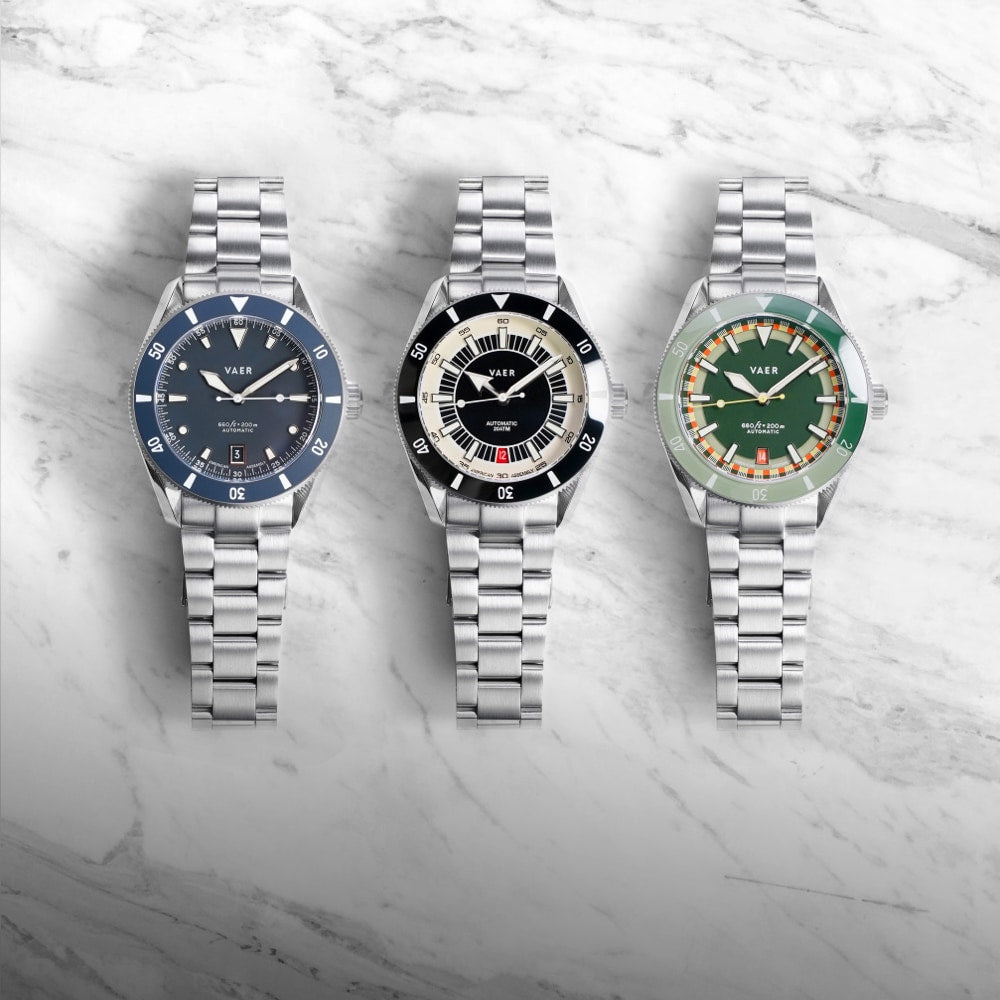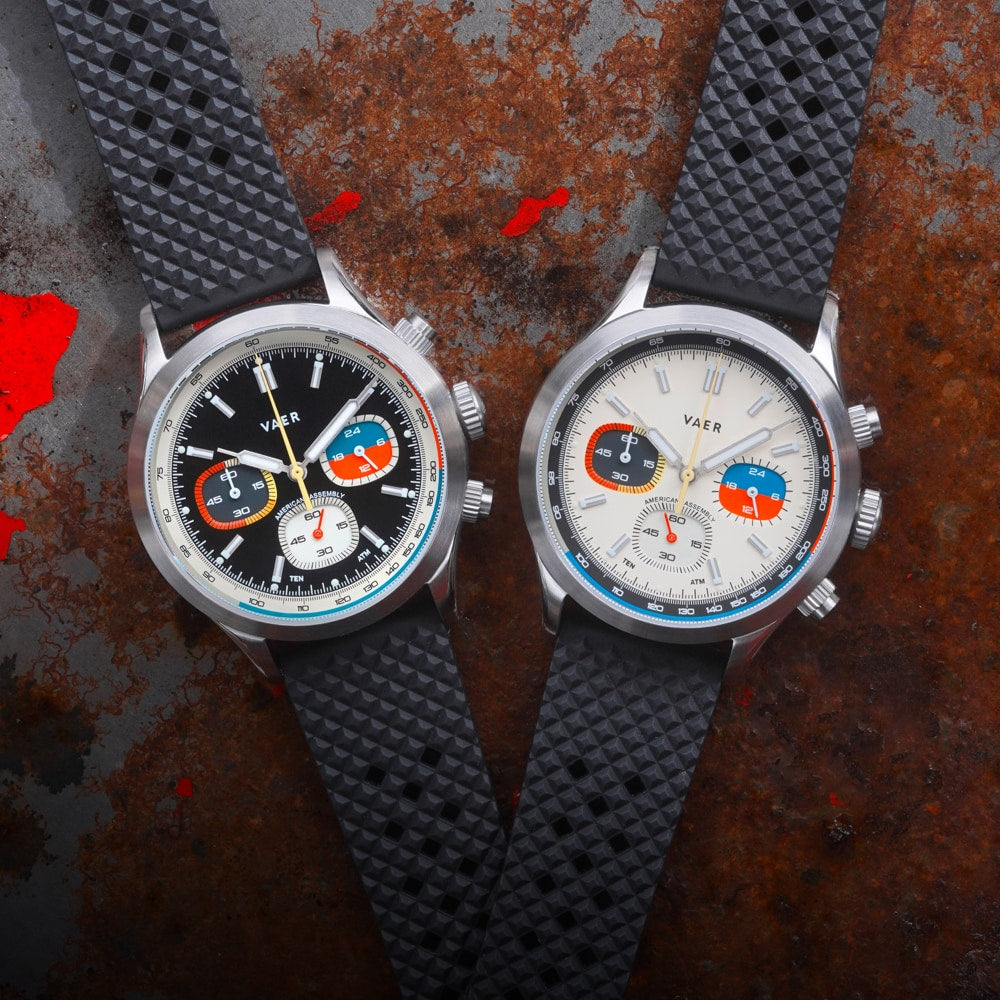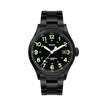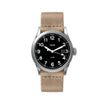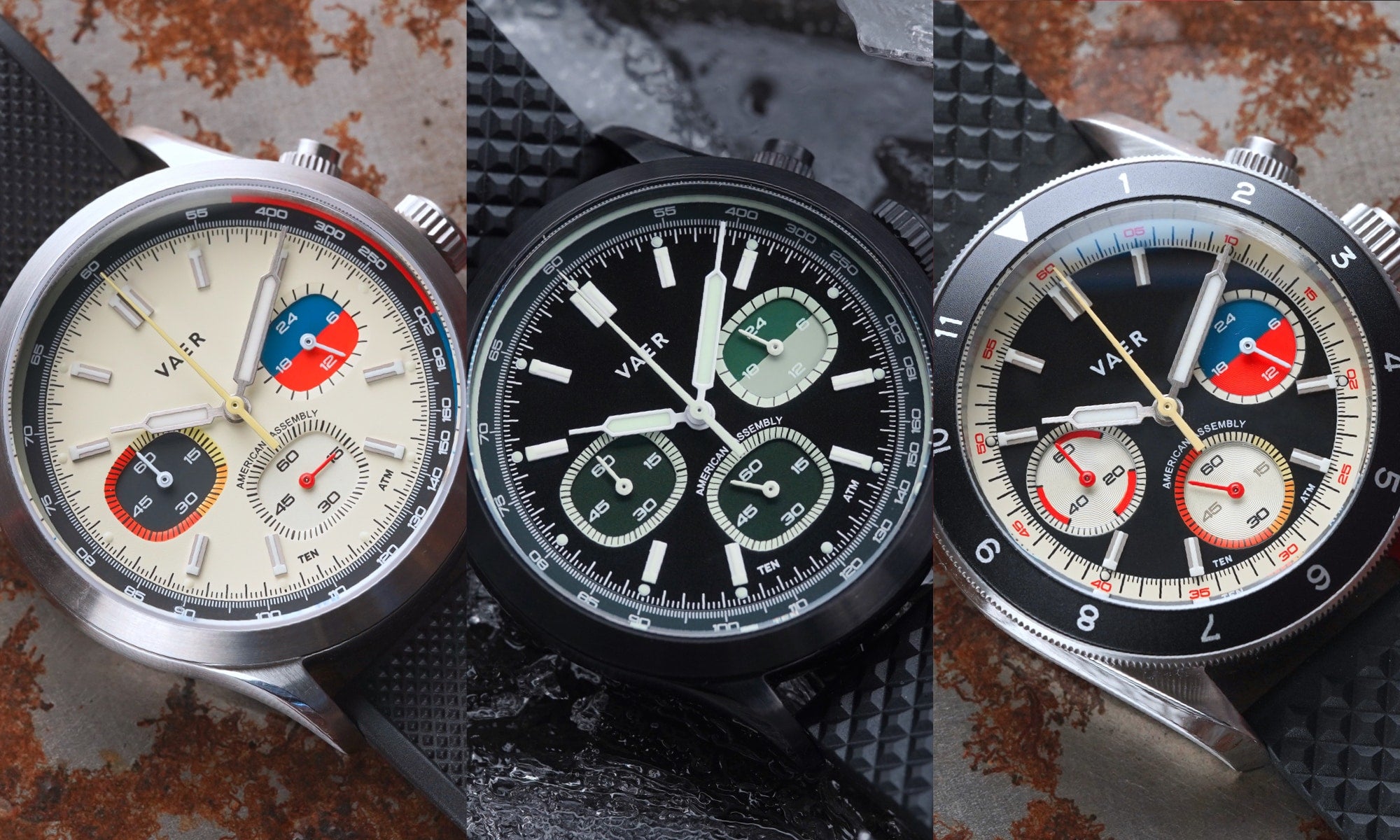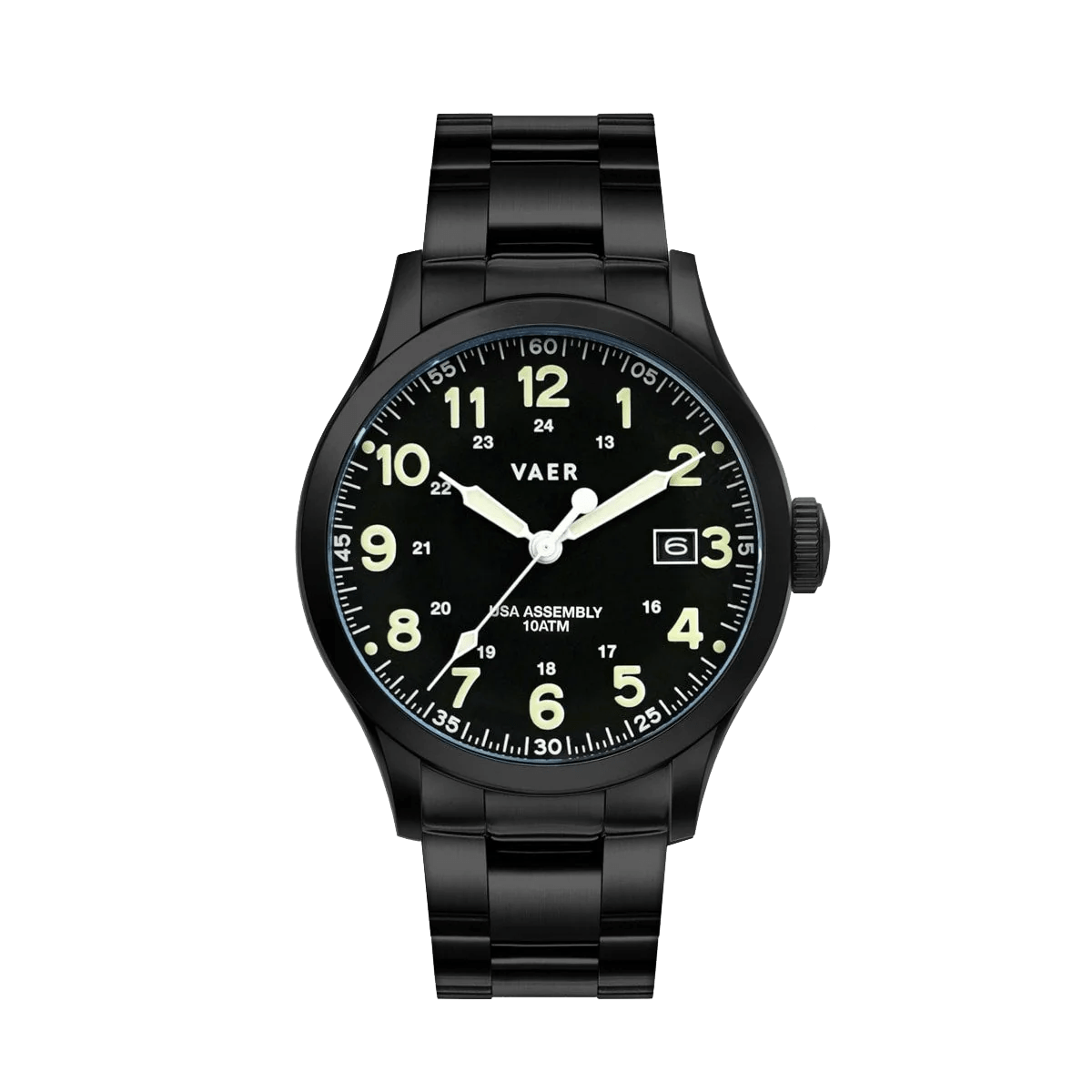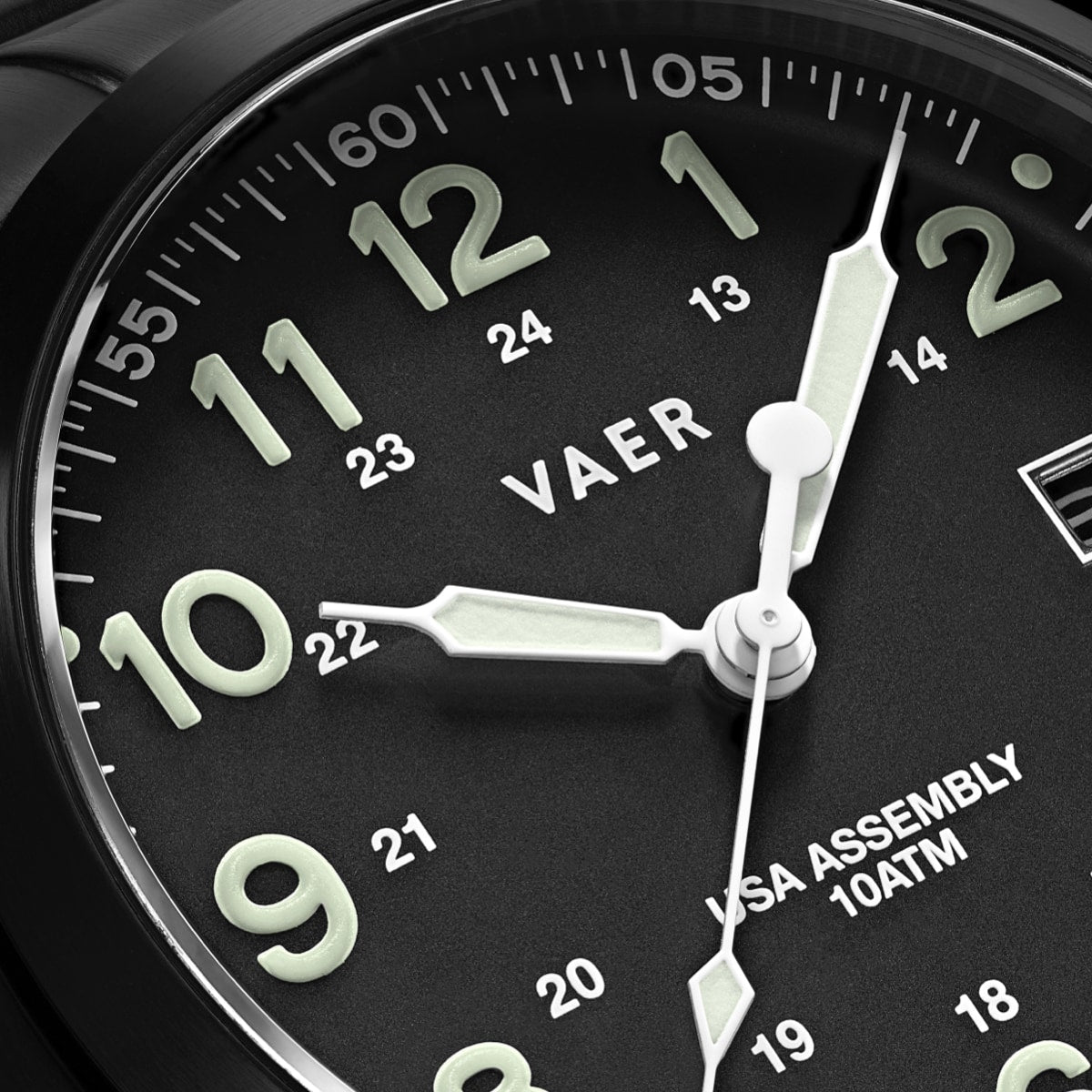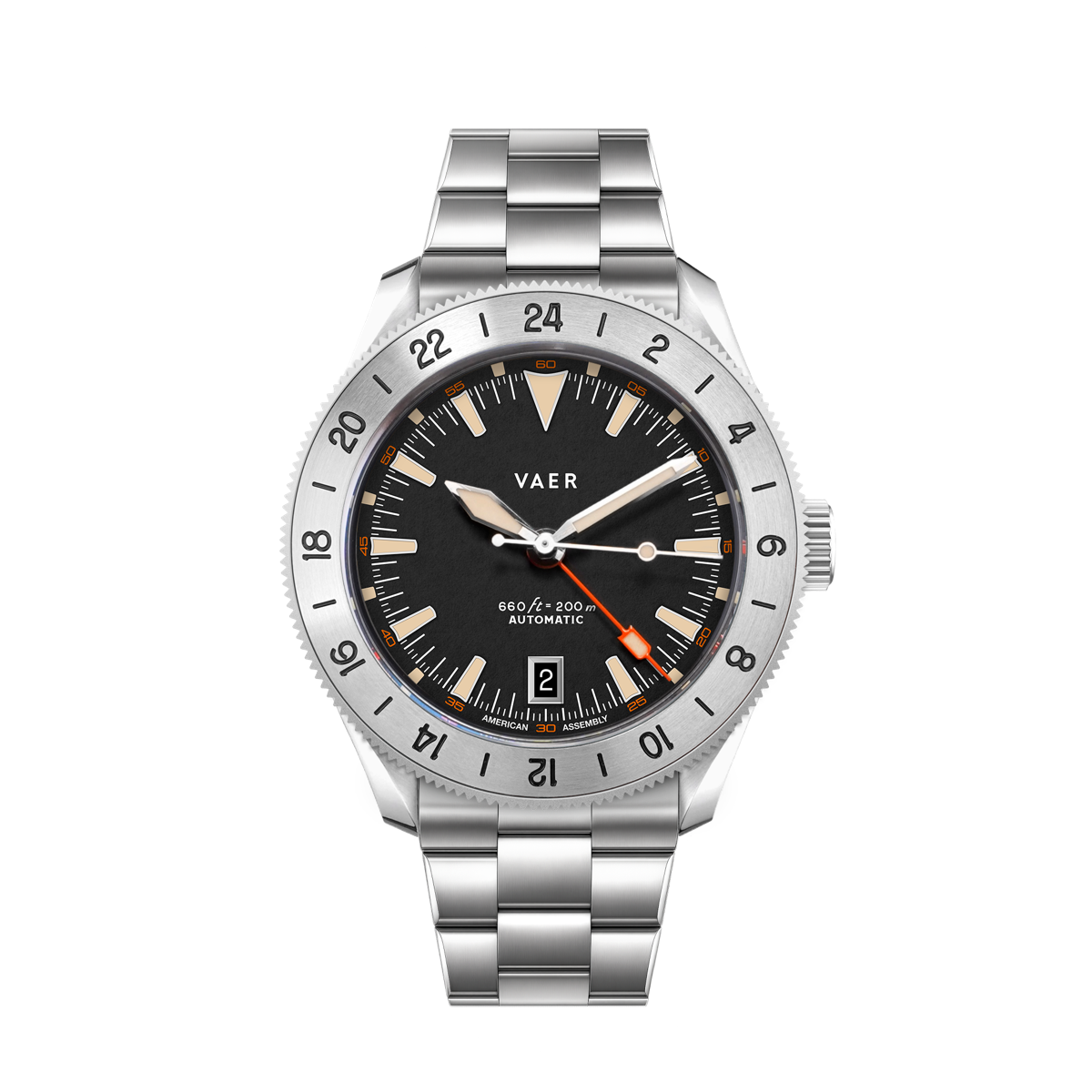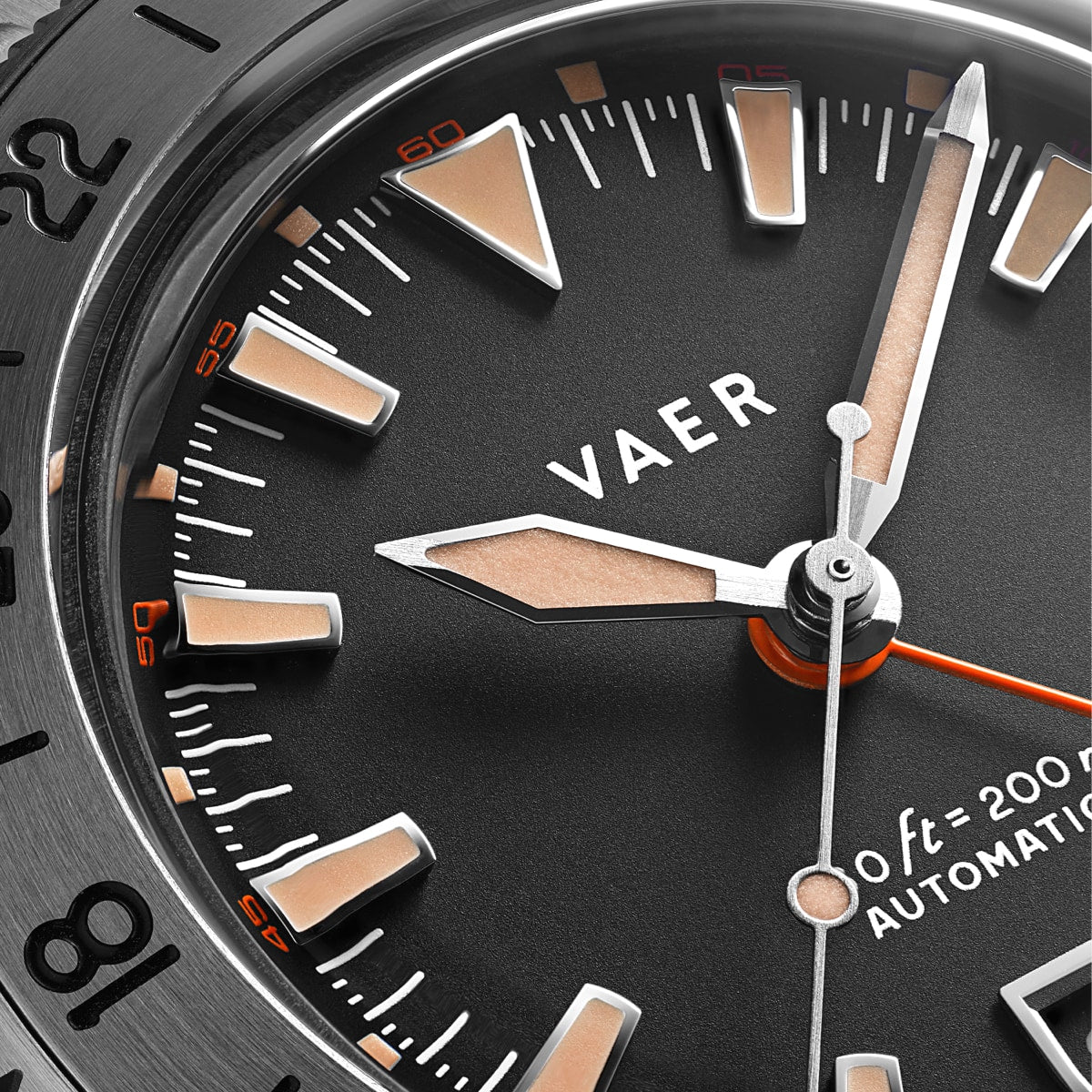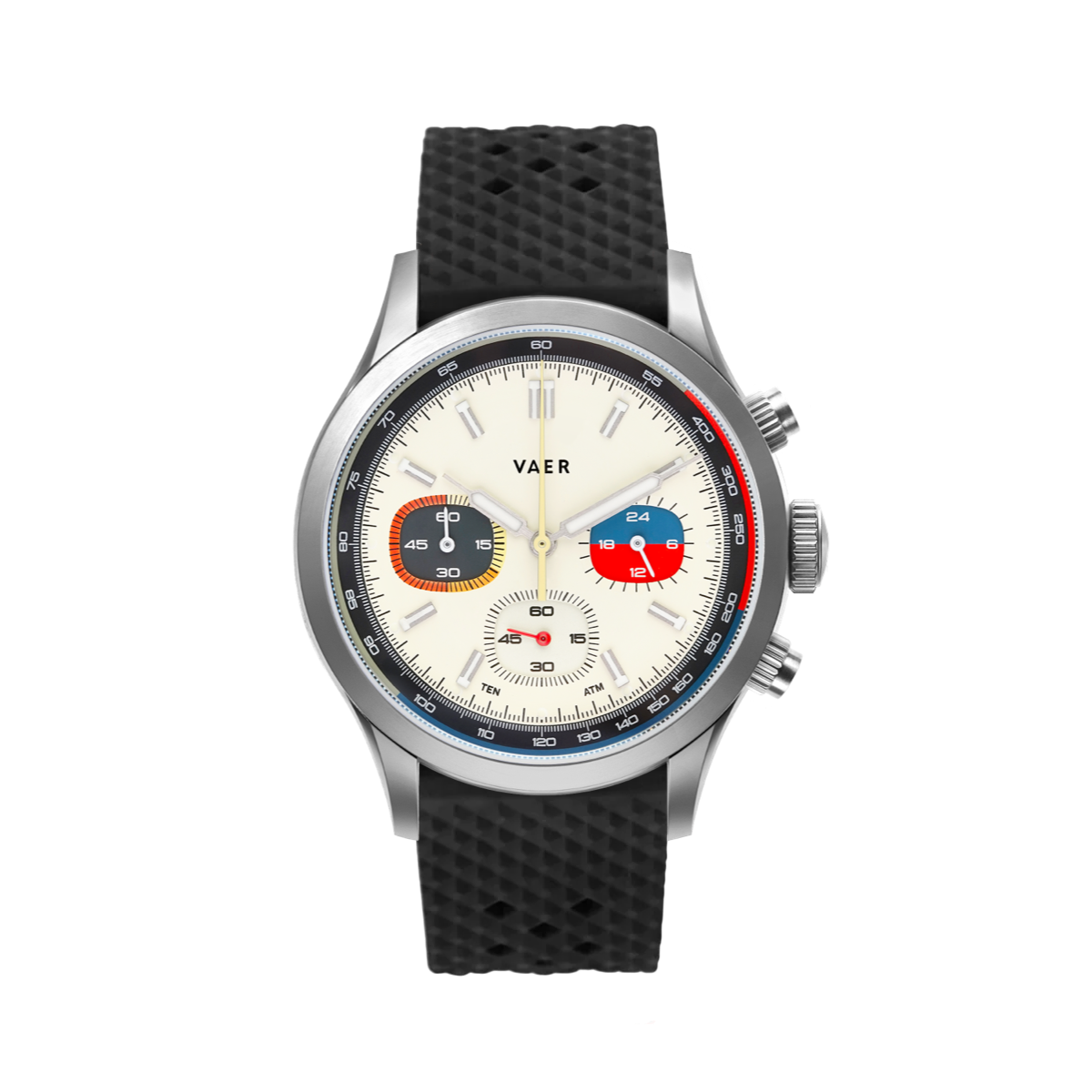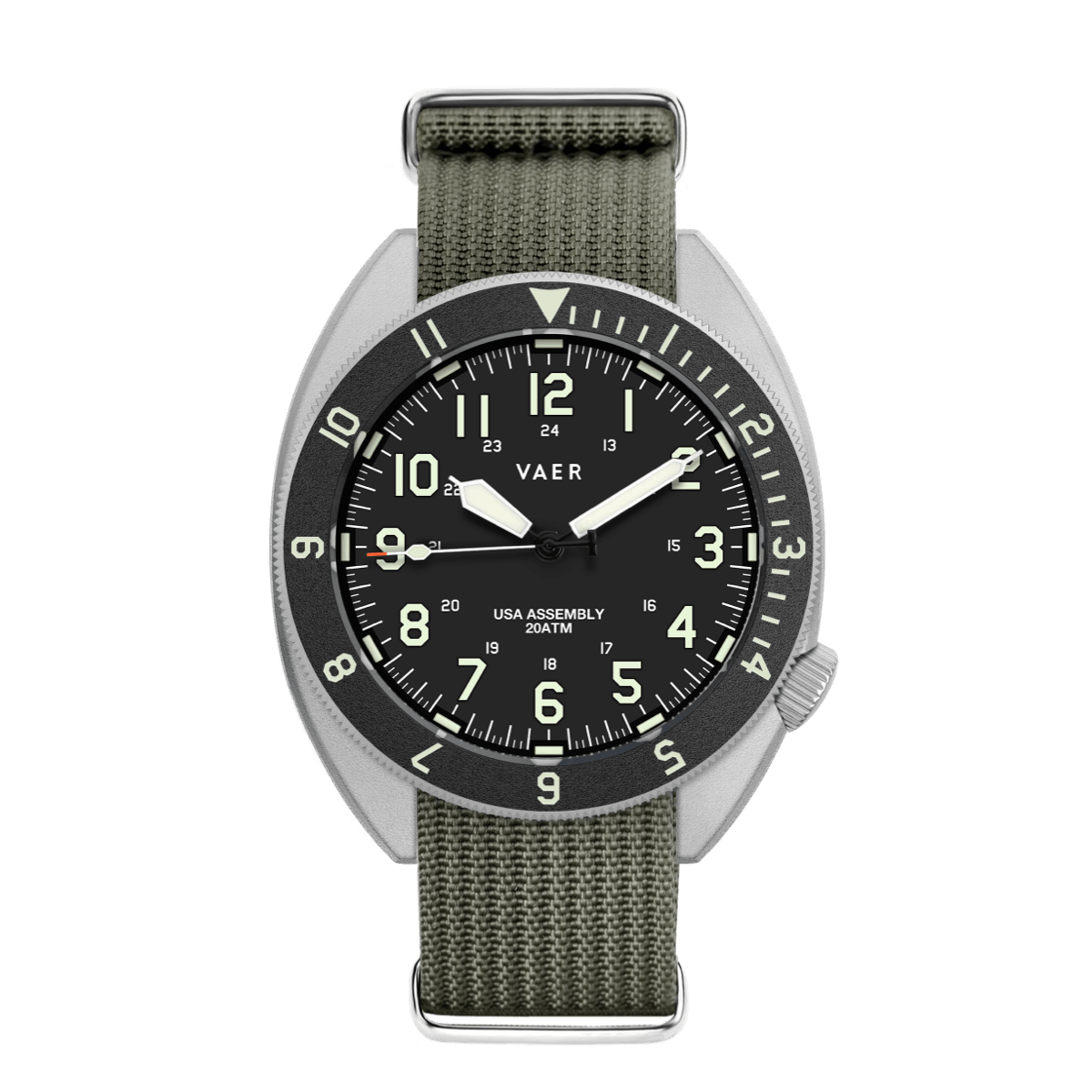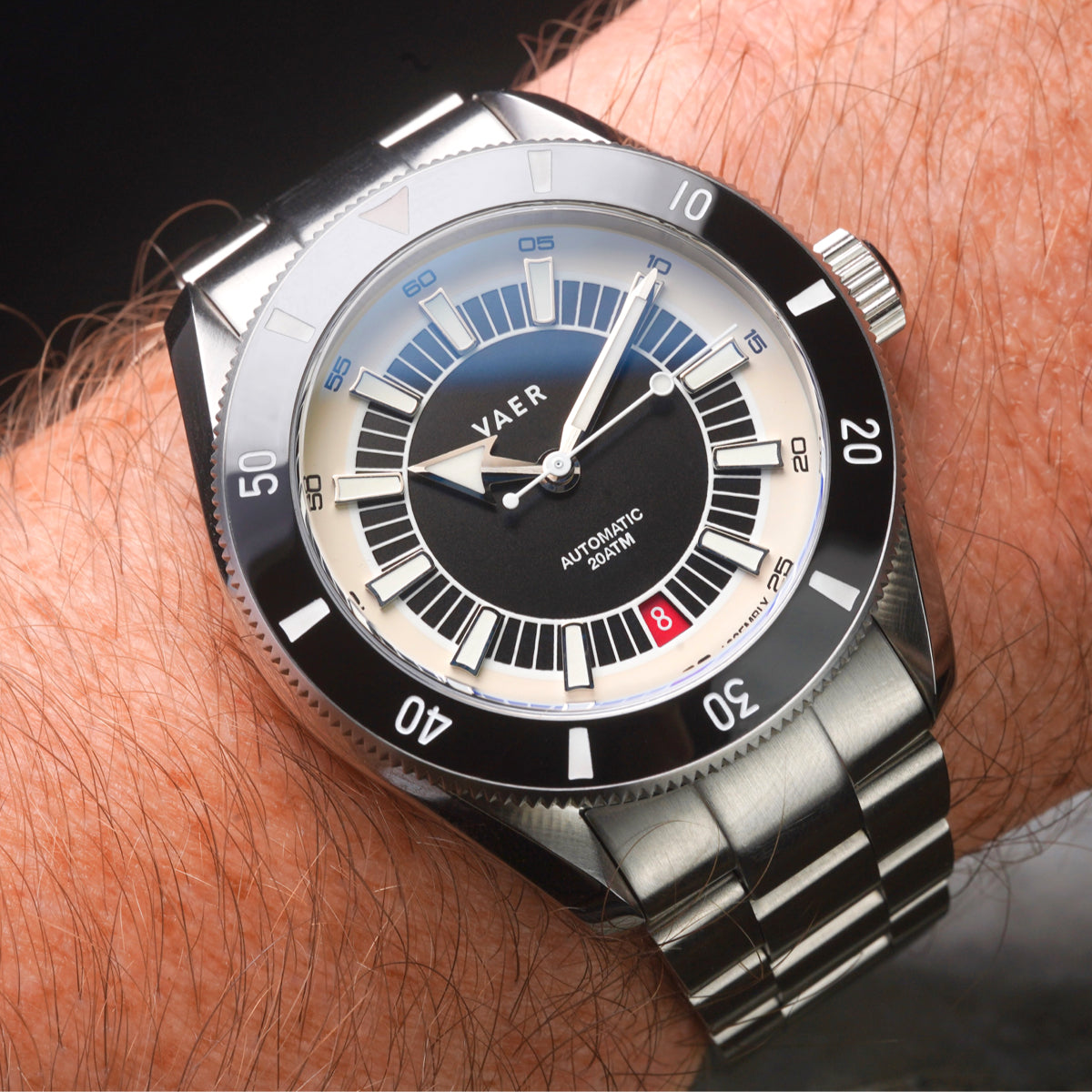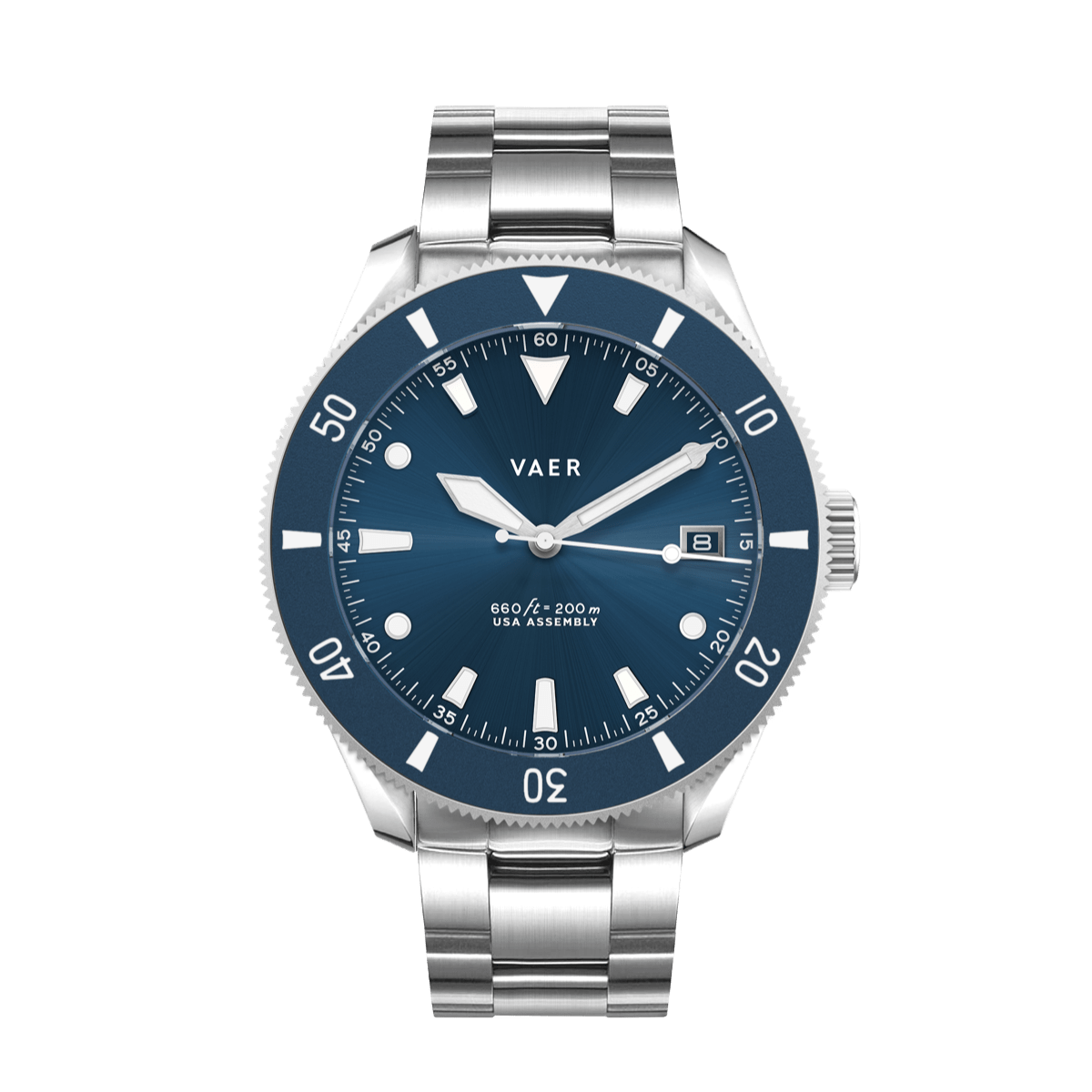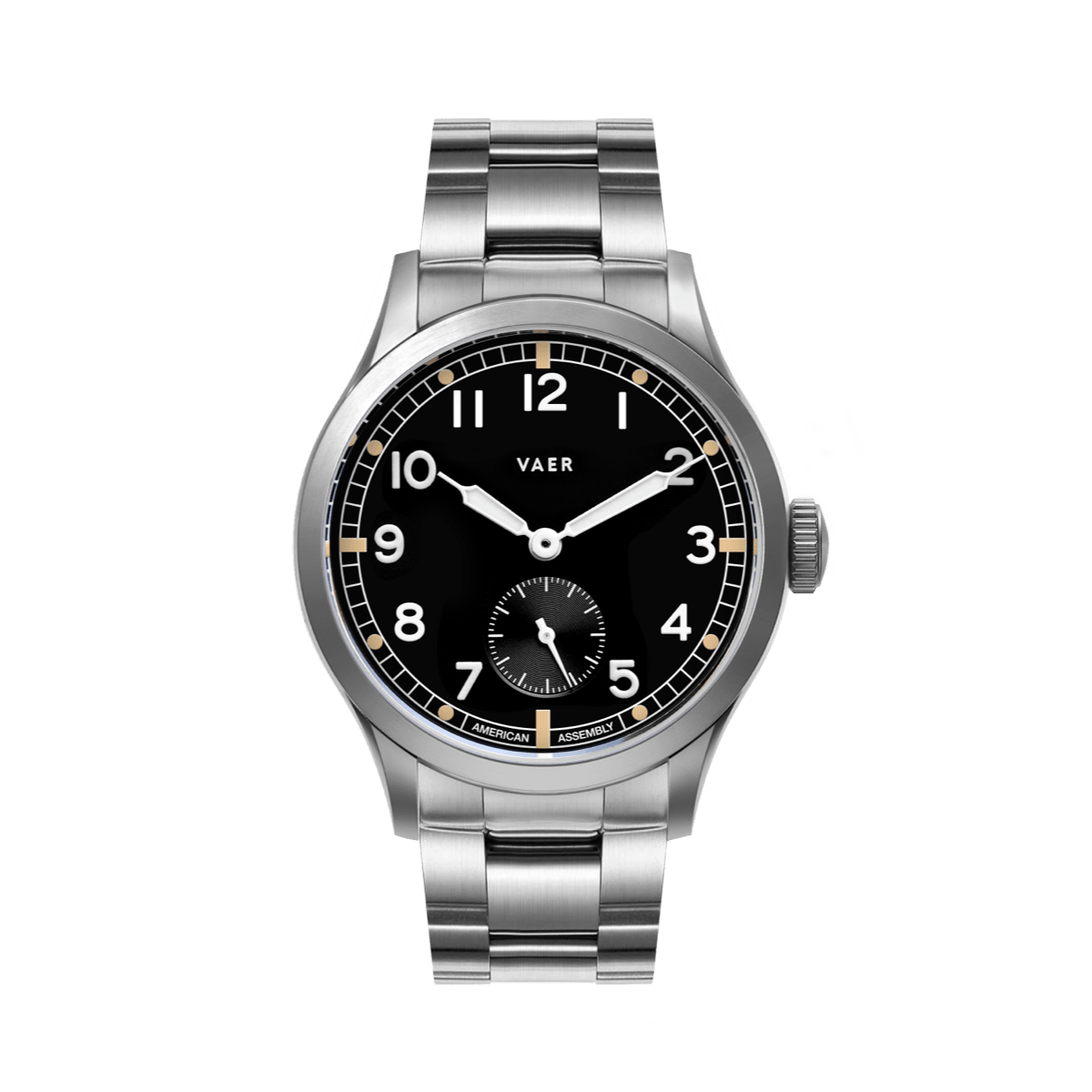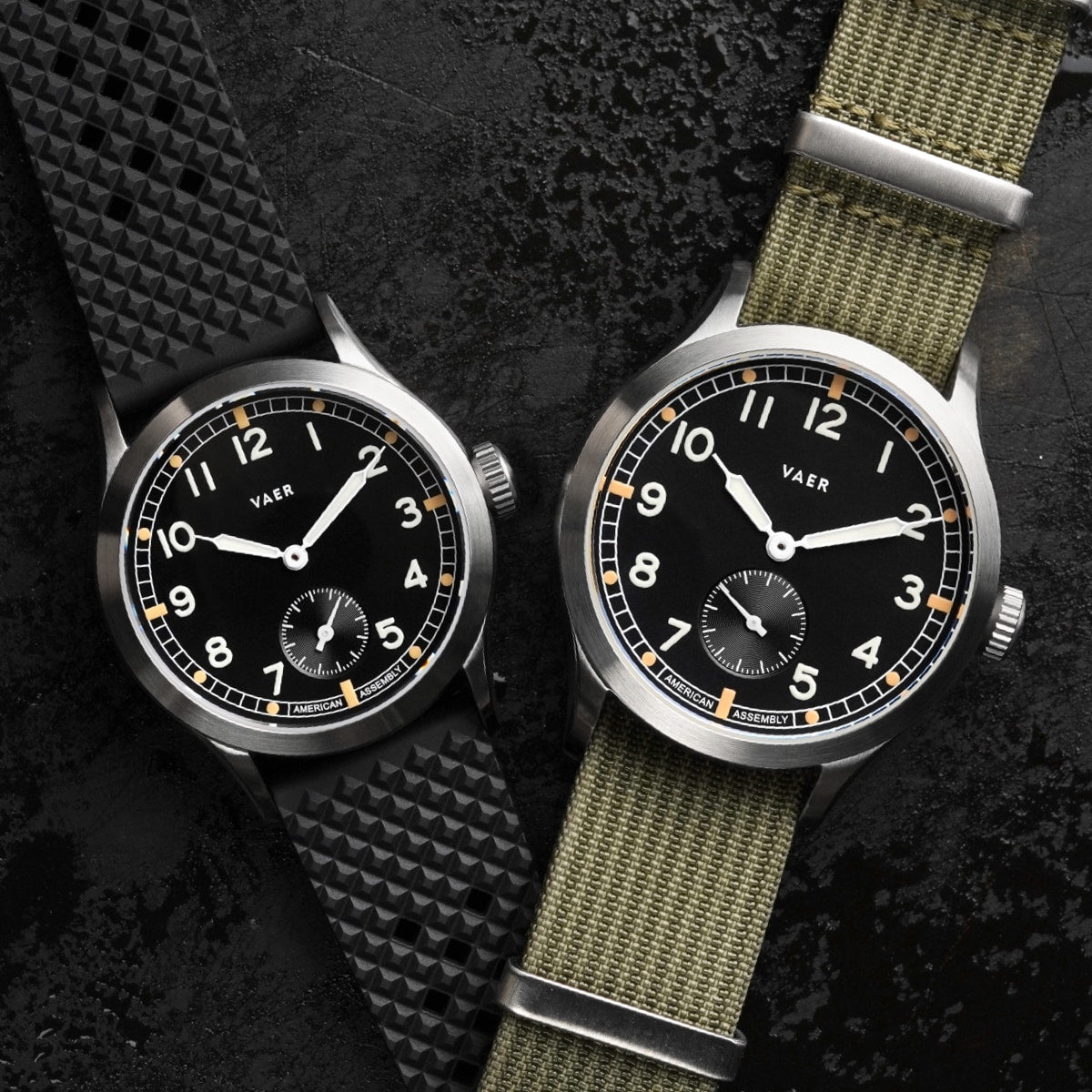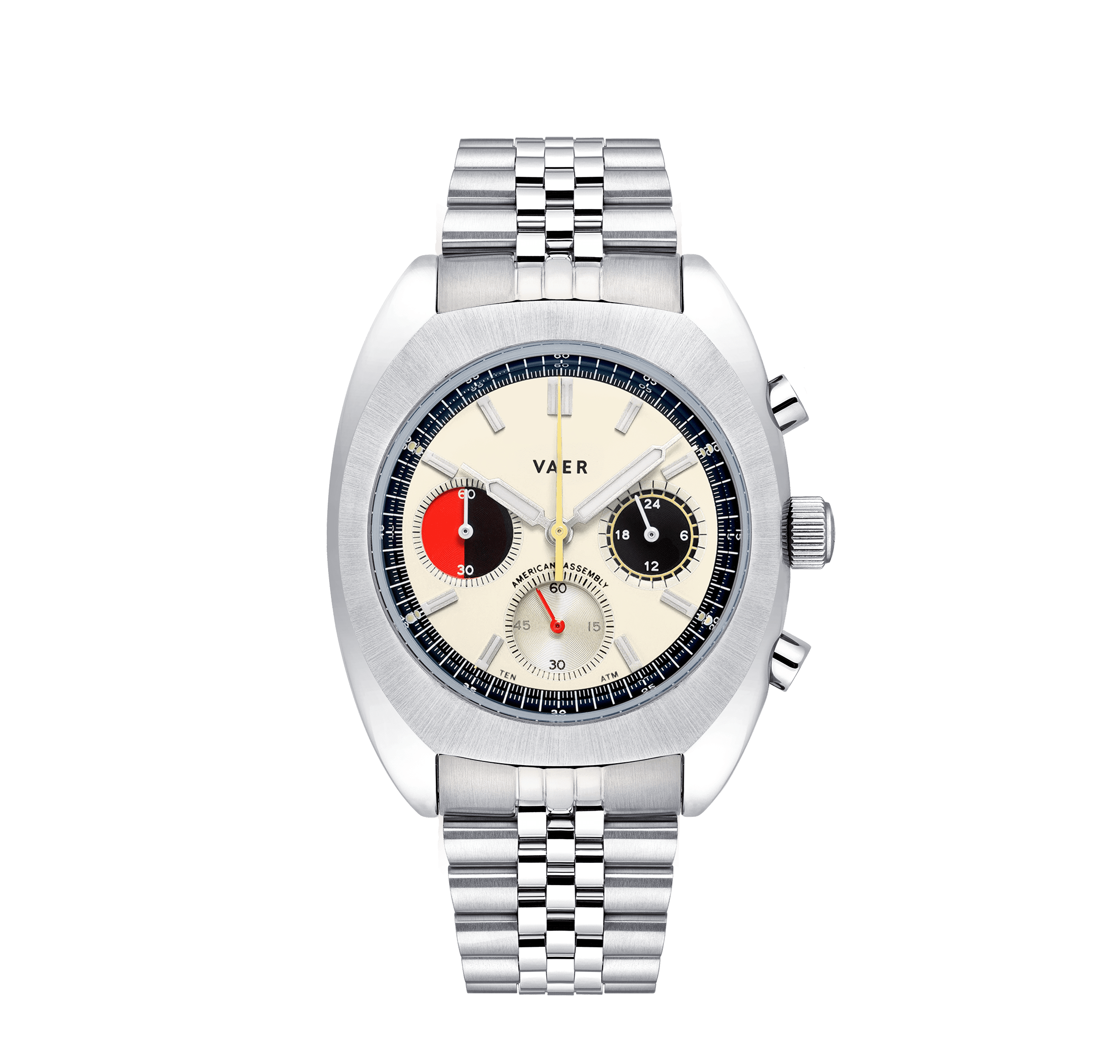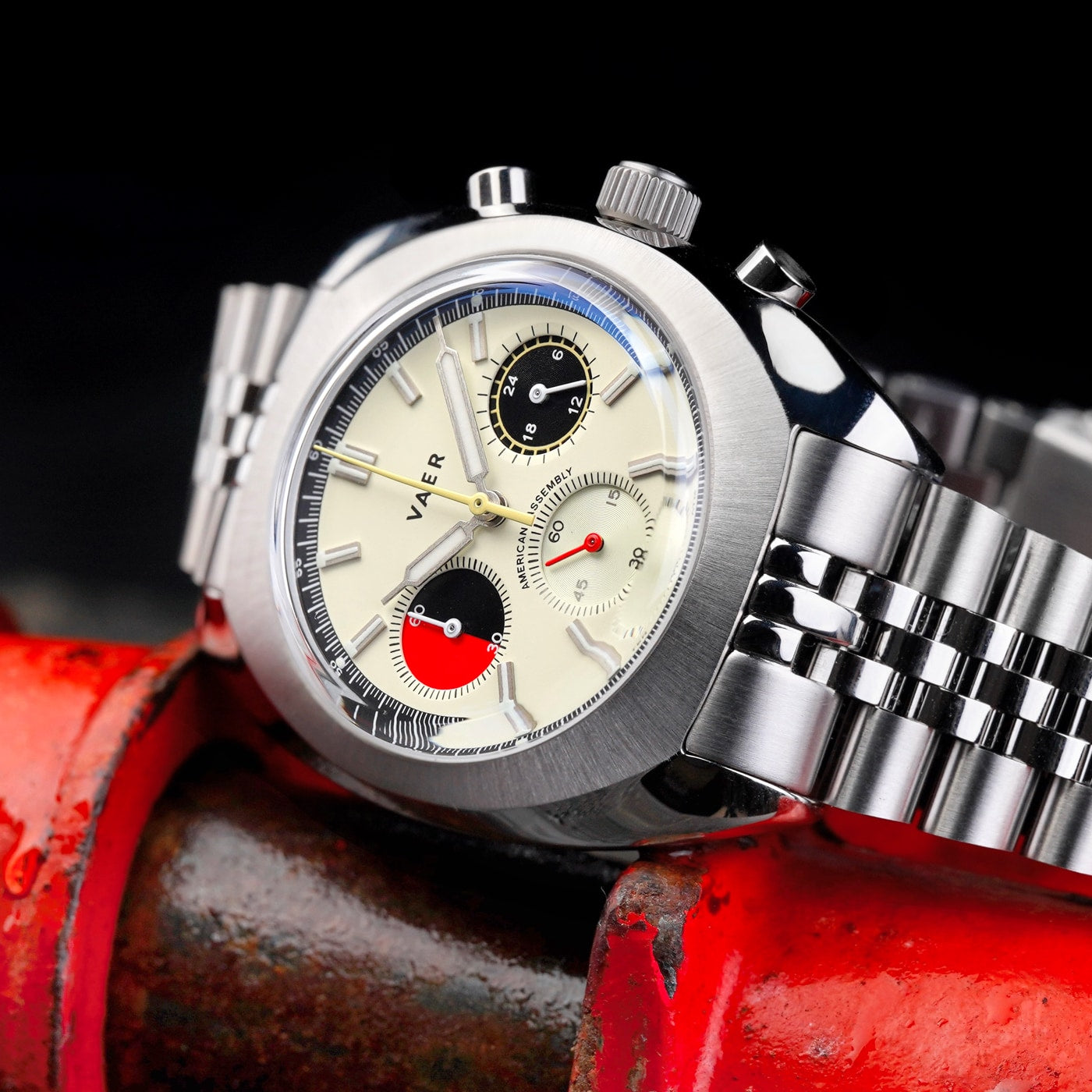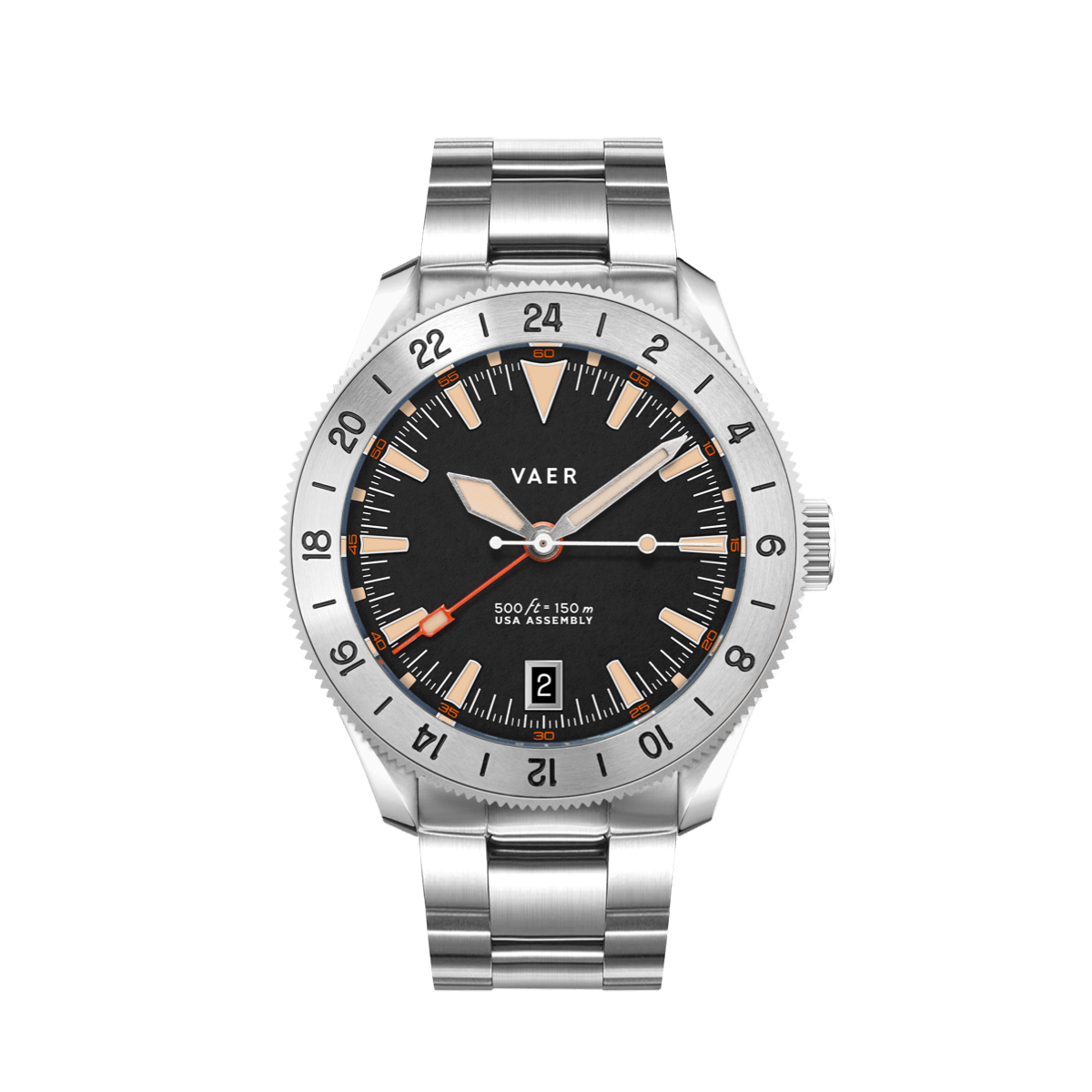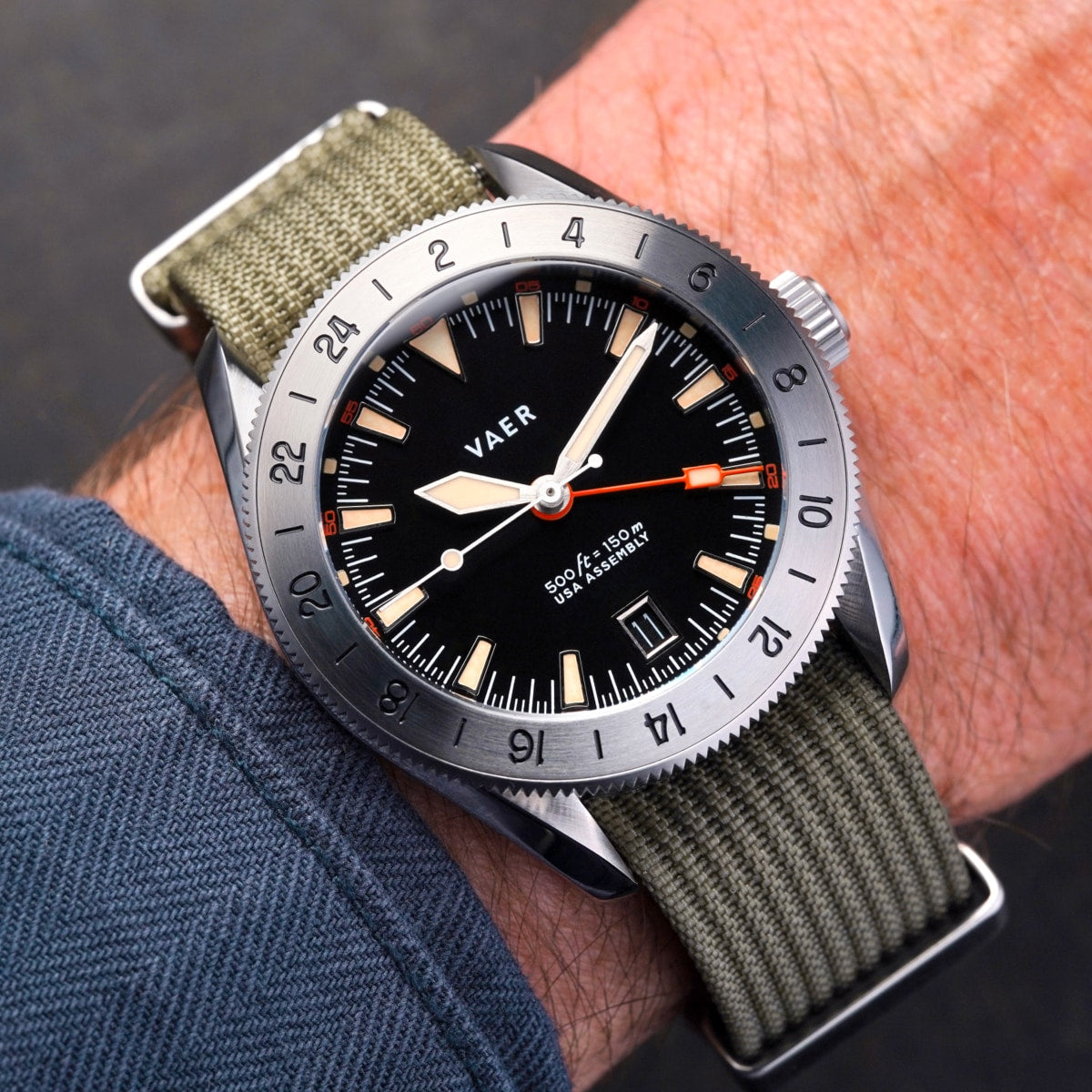At Vaer, the phrase "American Assembly" isn't just a marketing term—it's the foundation of our business philosophy. While the term is imperfect - reflecting the challenge/impossibility of delivering a truly Made in USA watch - it reflects an effort, and a mission to try our best to deliver American sourcing and craftsmanship at scale.
Despite constant misconceptions from comment trolls online, it involves much more than just attaching a strap or a set of springbars. It's a complex, meticulous process that we're proud to delve into in the details in this article.

Breaking Down the Assembly Process
A) Pre-Assembly
1. Kitting and Preparation
Before any actual assembly begins, our process starts in the pre-assembly phase which is critical for setting the foundation of our meticulous assembly. This stage includes sorting and receiving components, organizing them into kits for different models like our D5 USA Diver, and preparing our stem-crown-combos.
2. Building Stem-Crown-Combos
We prepare these combos carefully to ensure the crown operates flawlessly with the case. This involves precise cutting of the stem to exact lengths—a task performed by specialized machinery designed to guarantee uniformity that manual processes can't achieve.


B) Clean Room Assembly
Following pre-assembly, the actual construction of the watches takes place in a dust-free, temperature-controlled clean room to prevent any contamination that could impair the functionality of the watches.
3. Dial Installation
One of the first tasks in the clean room is installing the dial to the movement, akin to setting the engine in a car. Whether it's a quartz, solar quartz, meca-quartz, or automatic movement this stage of the assembly process requires incredible technical precision and talent.
4. Quality Control Check
Once the dials are attached to the movements, they are set in a tray for the first assembly QC check. QC is done for the same reason we use a cleanroom, lab coats, air filtration, and finger cots - making mistakes with US assembly costs a lot of money.
Supporting American sourcing means supporting American labor - and compared with China, it’s pretty darn expensive. Based on hourly assembly costs, a minute of assembly in the United States, costs about the same as 30 minutes of assembly in China. QC helps us catch issues early and make the most of our technicians time.


5. Hand Installation
Installing the hands of a watch is definitely one of the more challenging steps of our assembly process, and basically involves stacking the hour, minute and second hand onto a very small pin protruding from the movement, through the center of the dial called a pinion. While it’s impossible to see without magnification, there’s a microscopic ball joint at the end of the pinion that the second-hand locks into.
Once the hands are installed, the tech will test out the hand alignment by rotating the stock factory crown, and making sure that the hands are aligning properly and that there isn’t any friction or tension between the hands the raised indexes. The technician will also work to ensure the hands are sitting as straight as possible and are completely perpendicular with the pinion. The friction from poor hand alignment can put undue strain on the movements, and ruin a watches accuracy over time. For this reason, the added checks and inspections done at this stage are incredibly important for both the aesthetics and technical performance of the watch.


6. Casing
You can have the best interior components on the market, investing in a movement that costs hundreds of dollars, but if you have a poorly assembled case or faulty gasket the entire watch will be compromised in real-world usage.
At Vaer our technicians insert the movement and dial through the open back of the watch case. This technique is commonly referred to as back-loaded assembly and is the standard practice for quality watchmaking, because it allows for the entire watch to be removed through the case back if repairs are needed down the road.
Many mass-market fashion watches and luxury brand knockoffs avoid back-loading cases because they're more expensive and they require a more sophisticated case design. Instead, they tend to "top load" their cases, dropping everything through the dial, and installing the glass crystal as a final step.
The problem with this approach is that you need to break the crystal to repair the watch, making top-loaded watches "throwaway items" meant to be replaced rather than repaired.
Obviously, that's not our vision for Vaer. We build our watches to last for decades and a big part of that means that they need to be easy to repair and maintain.
In addition to the backloading design, our rigorous water-resistance standards add additional requirements to the casing stage. Both our 10ATM and 20ATM watches use screw-down crowns and casebacks, and leverage extra-thick rubber gaskets at all openings to ensure an air-tight seal.

7. Installing the Stem & Crown
Near the conclusion of the casing stage, the technician will re-introduce the stem-crown combinations we saw at the beginning of the video. Once these are attached the watches are essentially complete, and only need to pass a final QC, water-resistance testing and for our automatic watches, time rate testing, and regulation.
C) Post-Assembly QC & Testing
In addition to the initial QC following dial installation, we implement a variety of post-assembly quality checks to prevent costly errors and ensure every watch meets our high standards accuracy and water resistance.
8. Timetesting
While a flawless assembly is critical, ultimately, owners are going to judge their watches based on how good they are at telling time. Our quartz, solar quartz, and meca-quartz watches offer near perfect accuracy, with a standard rating of -10/+20 sec/month.
Mechanical automatic watches, which are preferred by the luxury watch industry, are far less accurate. Even $100,000 movements, used in the rarest Swiss concept watches are rarely capable of surpassing Swiss Chronometer or COSC certification of -4/+6 seconds per DAY. For that reason, movements need to be tested and regulated at the assembly stage to ensure they offer a competitive timekeeping standard.

9. Water Resistance Testing
Once the watches are guaranteed for accuracy, the final step of the assembly process is water-resistance testing. There are a variety of ways of testing a watch resistance rating, and interestingly, few of them involve the use of any water. Instead, the most common method is a dry pressure test which uses sophisticated equipment to artificially generate extreme air pressures inside a vacuum.
10. Final QC Check
Once the watches leave our assembly facility, we complete a final independent quality check in either Los Angeles (Blake) or Kansas City (Denise) to hold our assembly teams to account. Despite the rigors of the on-site QC, we typically see a 1-4% failure rate at this final stage, at which point the failed watches will be sent back to the technicians for re-assembly and clean up.

Why American Assembly Matters
Our commitment to American assembly is about more than just great story—it's about quality, reliability, and investing in local talent. By assembling our watches in the USA, we control every aspect of the production process, from initial sorting to final quality control.
Supporting Local Talent
By keeping the majority of our assembly operations in the US, we support the local economy and help foster high-paying manufacturing skills that are vital for the industry's future. This approach has the added benefit of reducing waste in our manufacturing supply chain as it is much easier to service, repair and upcycle watches here in the United States than it would be overseas.

Conclusion
Our USA assembly process is a reflection of our dedication to quality and our commitment to maintaining the highest standards in watchmaking. It’s a complex, detailed operation that ensures every Vaer watch is not only a functional tool but a impressive representation of American craftsmanship.



